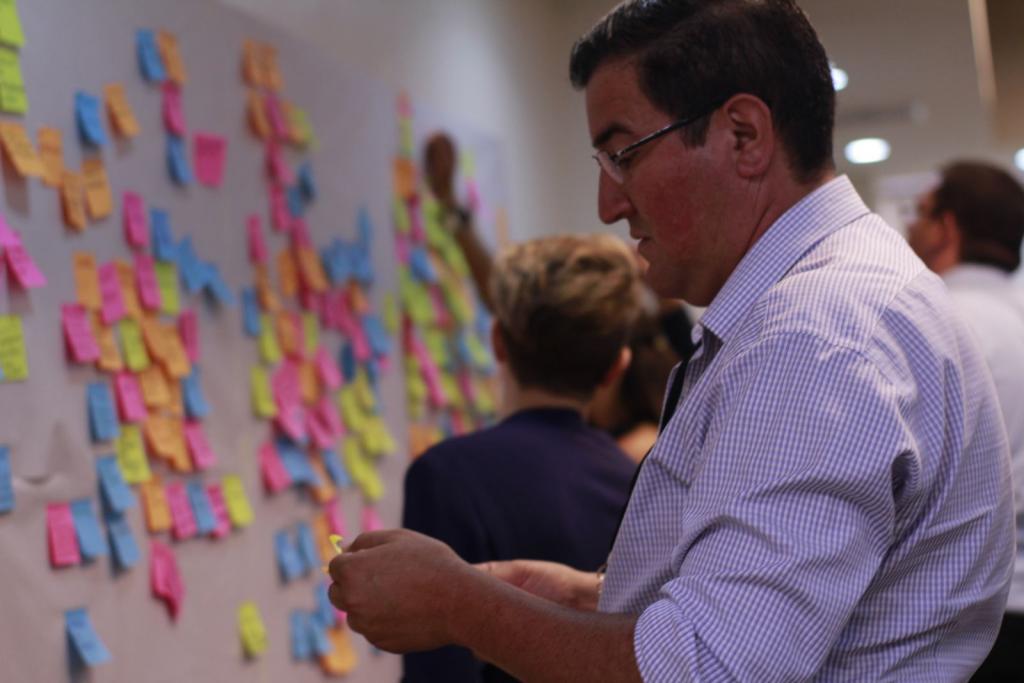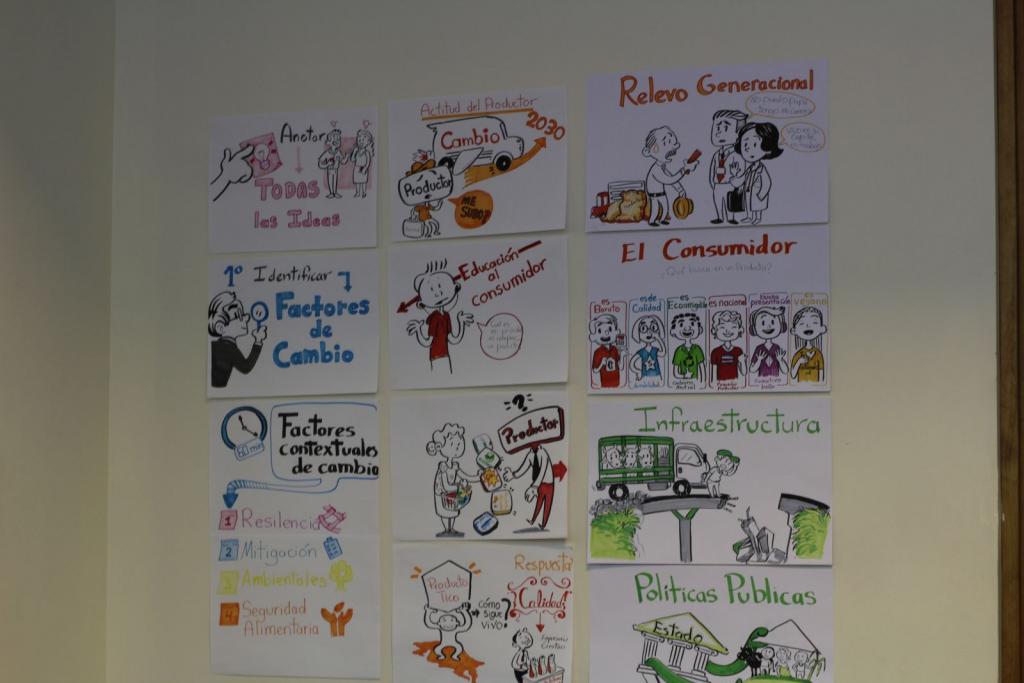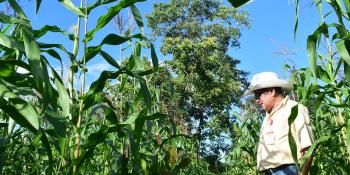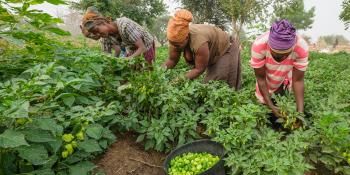Costa Rica imagines its future to change its present
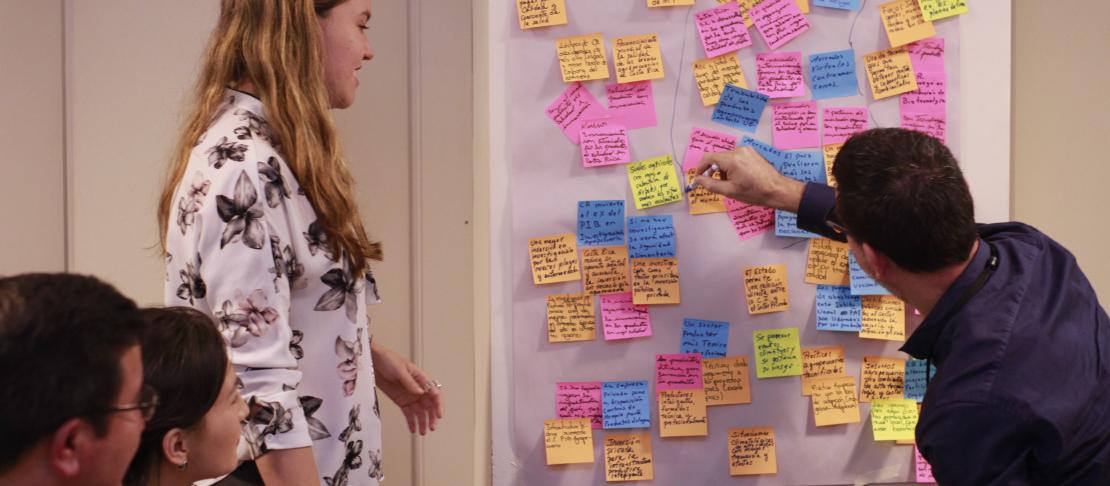
The Central American nation takes a fresh approach to rethink its agriculture for 2030.
This was not an ordinary workshop. In a hotel in central San Jose, Costa Rica, armed with colorful post-its and highlighters, individuals from different sectors and backgrounds were all looking at their common ground: the country’s agriculture. The issue on the table was how to make Costa Rica’s agriculture sustainable and stronger as climate change creeps in, while cutting its greenhouse gas (GHG) emissions, as it committed to do in the Paris Agreement. The first deadline? 2030.
The workshop was the second in a series of two dialogues that brought together leaders from agriculture, the private sector, non-governmental organizations and academia to discuss how to achieve these goals. The workshop also aimed for an inter-institutional agreement between Costa Rica’s Ministry of Agriculture and Livestock (MAG) and the Ministry of Environment (MINAE), an objective within the National Development Plan for 2015-2018. The workshops were initiated by the two ministries, with support from the University for International Cooperation (UCI) and the CGIAR Research Program on Climate Change, Agriculture and Food Security (CCAFS).
Developing scenarios for policy planning
The future scenarios approach is a methodology that helps policymakers to ask what needs to happen today to achieve goals in an uncertain future, and allows them to think through plausible alternatives of the future. The scenarios used focused on the context for better decision-making. The methodology was developed by CCAFS and the University of Oxford, and is implemented in Latin America by UCI.
The future scenarios methodology involves looking at a wide array of conditions that might influence the matter analyzed. Photo: Karla Souza (UCI)
The first workshop had concluded only a few days before, at the end of August 2017, when the participants put the methodology in motion by creating four possible scenarios around Costa Rica’s agriculture, livestock sector and food security. That involved analyzing the key factors and uncertainties linked to the green growth of the sector under a changing climate.
The participants built the scenarios considering factors of change: a variety of factors that could influence the future, including public policy, land use planning, national and international markets, legal frameworks, pests and diseases, soil quality, and farmers’ behavior in the face of change.
“We’re used to looking mostly at historical data, but this approach gets us out of that mentality and pushes us to explore our best and worst thoughts about a future under climate change,” said Luis Diego Obando from the Corporation of Livestock Growers (CORFOGA). “The methodology really reached its purpose and the best part was the freedom to express our opinions and exchange knowledge with actors from different sectors,” he added.
Elements used for building future scenarios for Costa Rica's agriculture in 2030. Photo: Karla Souza (UCI)
The four resulting scenarios were:
Love in the time of hunger: The state has the capacity to support agricultural development, financially and politically. Farmers are challenged by a lack of resources and reject technological innovations, facing high production costs. Production is traditional and based on price competition, while resource management—for water and soils—is poor. Consumers are price-focused and neglect environmental aspects. Food security issues and high poverty levels influence the government's focus on agriculture.
The promised land: The state can easily facilitate agriculture’s transition towards highly adaptable production and towards mitigation actions, within national and international markets demanding sustainable, high-quality products. Farms implement state-of-the-art technologies and remote monitoring, while private and public investments in agriculture are continuous.
Without dogs, we hunt with cats: As the state has low capacity to support the transition, the private sector takes initiative in maintaining food and nutrition security, as agriculture has a high adaptive capacity and society demands high-quality and high value products. There is a lot of progress in creating and strengthening producers’ organizations, and farmers exchange knowledge and experiences.
An inconvenient reality: The situation is dire, with permanent emergency situations of drought and heavy rains that do not allow agriculture to develop. This triggers migrations within and outside the country and an abandonment of farmland, which in turn leads to lower climate change adaptation and mitigation capacity. Imports dominate, with low-quality products while the market is controlled by external forces.
This second reunion of stakeholders in agriculture built on that first step by analyzing these scenarios and what they could mean for Costa Rica’s agriculture in the future. The dialogue then moved on to making recommendations for political action and to developing a long-term vision for agriculture in 2030.
“Agriculture brings together a greater diversity of actors than the energy or transport sectors, which call for a simpler vision to reduce their GHG emissions”, said Franklin Paniagua, who was in charge of the sectorial consultation process. “The future scenarios methodology allows agriculture, where each product requires different conditions and approaches when it comes to making changes, to search for low-carbon solutions in an integrated manner,” he explained.
Alexandra Popescu is the Communications Officer for CCAFS Latin America.

